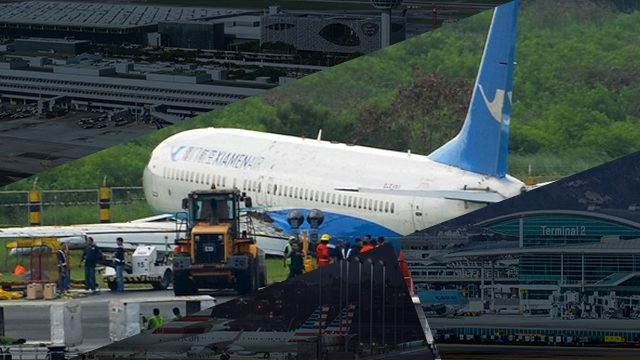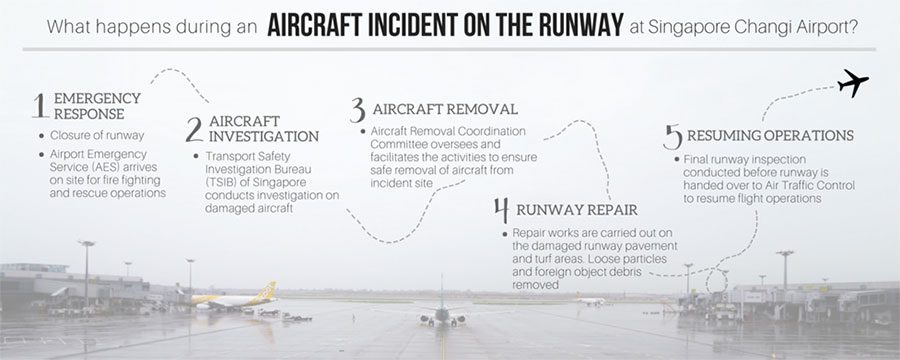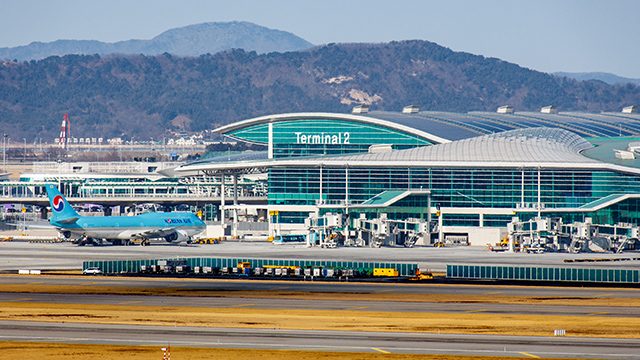SUMMARY
This is AI generated summarization, which may have errors. For context, always refer to the full article.

MANILA, Philippines – Earlier this year, the Ninoy Aquino International Airport (NAIA) ranked 10th on the list of the “world’s most improved airports,” according to a report released by London-based Skytrax, an independent customer forum that rates airports and airlines.
However, there is still a lot for room for improving Manila’s premier airport, especially in terms of dealing with airport crises.
It took 36 hours before NAIA’s runway was officially reopened following the Xiamen Air accident last Thursday, August 16. It was originally set to reopen at 12 noon on Friday, August 17, but was delayed due to difficulties in removing the immobilized Boeing 737.
It took 5 days for flight operations to normalize, but some airline carriers, such as Philippine Airlines, are still dealing with the aftermath of the runway mishap.
While runway incidents and delays are inevitable, preemptive measures and immediate remedial action can minimize overall damage on airport operations. How do other international airports respond to similar incidents?
Swift response, alternative runways
Changi International Airport, also named the world’s best airport since 2016, practices efficient response to emergencies in the airport’s runway. (READ: #SG50: What PH’s NAIA should learn from SG’s Changi Airport)
According to the Changi Airport Group, management and recovery operations follow 4 steps: emergency response, aircraft investigation, runway or turf repair, and resumption of operations. Depending on the type of incident and aircraft involved, time spent for these operations varies.

While fairly similar protocols have been used by NAIA authorities, what gives Changi Airport an advantage is its two-runway system. Flight operations may be halved during incidents, but the good thing is, access to Singapore’s gateway is not entirely paralyzed.
For instance, a South Korean airshow plane skidded off the runway and caught fire on February 8, 2018, causing disruptions in flight schedules and the closure of one of Changi’s runways.
However, some flights were able to access the airport via Runway 2. Immediate reopening of the runway 6 hours after the incident also facilitated swift normalization of flight operations later on the same day.
Similarly, operations were unaffected in Seoul’s Incheon International Airport after a US cargo plane skidded off the runway on June 6, 2017, since the two other runways were fully-functional.
Runway technologies

Aside from better responses and alternative runways, advanced runway technologies can also help mitigate runway mishaps. In Incheon International Airport, a runway incursion monitoring and conflict alert system (RIMCAS) is in place.
Runway incursions and other mishaps are first monitored through the Airport Surface Detection Equipment Radar (ASDE). Then an alarm is triggered whenever air traffic control monitors a possible runway incursion is bound to happen.
Other technologies in place – such as new ASDE-X antennas with multi-radar tracking function and automatic dependent surveillance-broadcast (ADS-B) system – also help in reducing aircraft blind spots especially during inclement weather.
Moreover, the United States Federal Aviation Administration has also begun setting up Runway Status Lights in 2017, designed to “reduce the number of runway incursions without interfering with normal and safe airport operations.”
The lights are embedded in the airport’s runways and taxiways which automatically turn red to signify that it is dangerous to use the runway.
Currently, the Runway Status Light Program is operational in 16 major US airports. The same system was also adapted by Paris’ Charles de Gaulle Airport in 2017, marking it a first for Europe.
NAIA’s next steps
Transportation Secretary Arthur Tugade said that the recent Xiamen Air mishap was an eye-opener on the need to improve on the airport’s protocols, procedures, as well as airline communications.
Airport operations were further delayed after some airlines pushed through with recovery flights without notifying the Manila International Airport Authority.
Some senators are pushing for NAIA’s expansion, given several proposals for the airport’s rehabilitation, development, and maintenance from both the NAIA Consortium and the private sector.
Other legislators, as well as airport authorities, also recognize the need to develop airports in other provinces like Clark and Cebu to facilitate easy redirecting of flights during situations like this. – Rappler.com
Add a comment
How does this make you feel?
There are no comments yet. Add your comment to start the conversation.